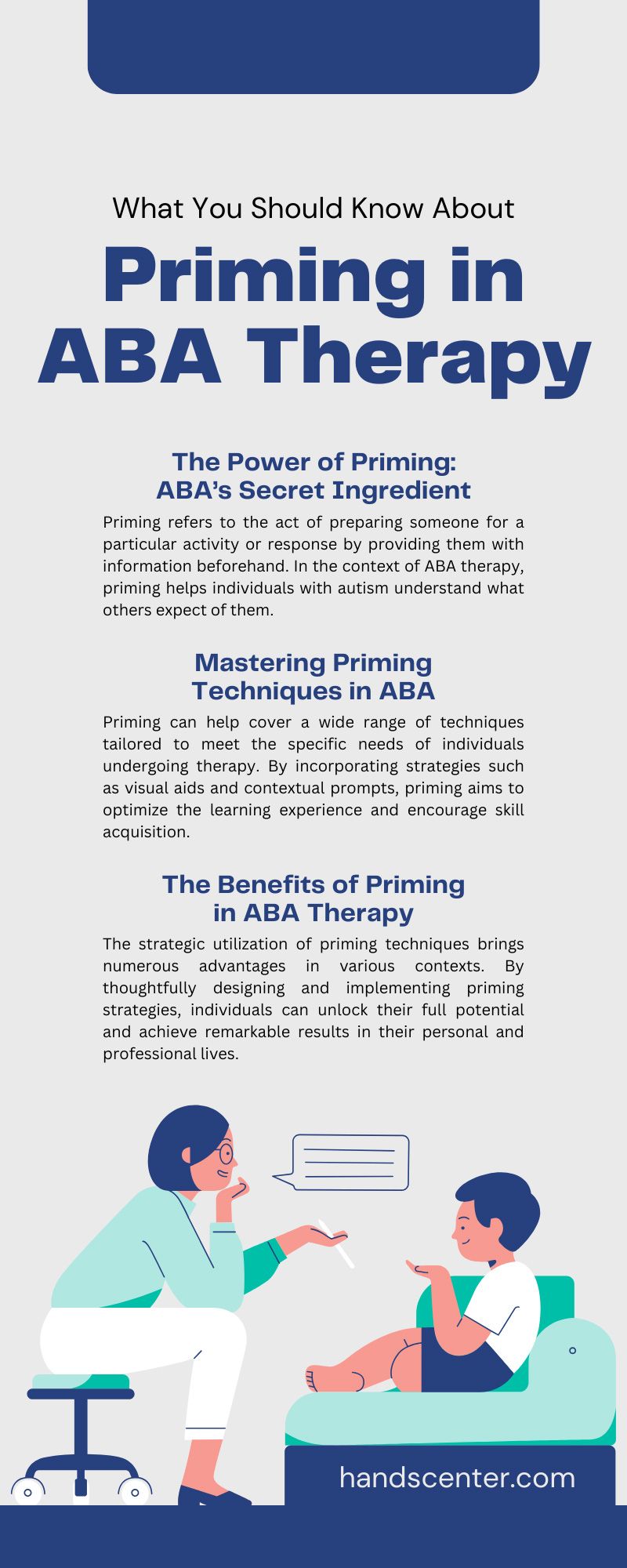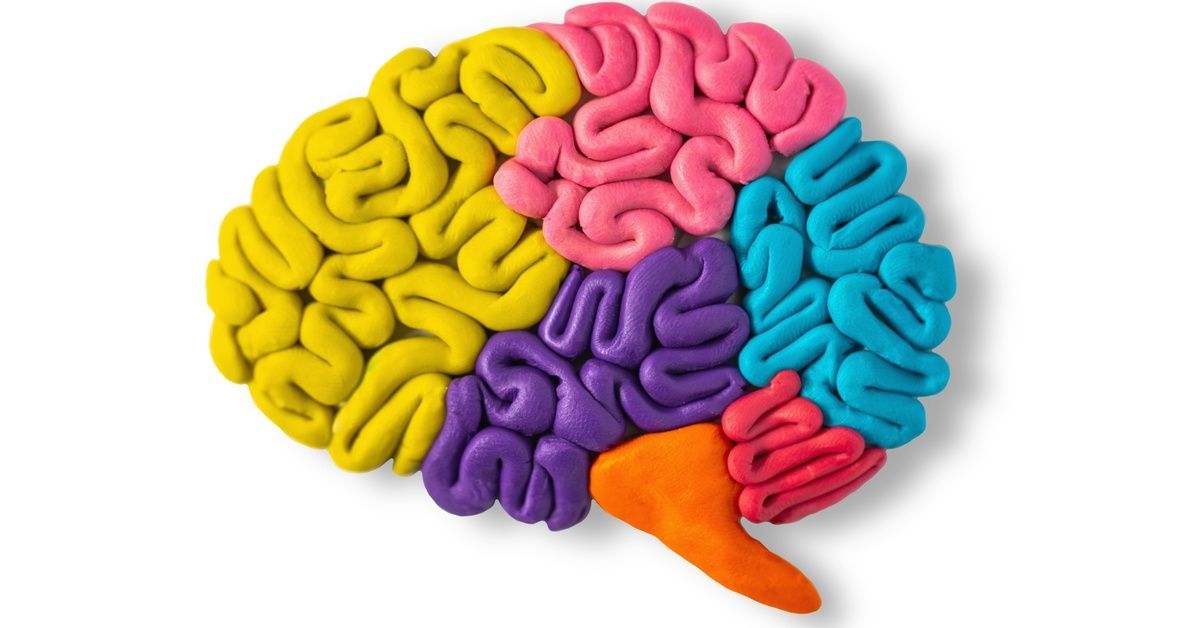What You Should Know About Priming in ABA Therapy
When it comes to navigating the complex world of autism therapy, Applied Behavior Analysis (ABA) often plays a crucial role in individualized treatment plans. However, in this case, priming acts as a solid and indispensable support beam. But what exactly is priming, and why is it so vital in ABA therapy?
It’s important to give your child the absolute best support to ensure their developmental goals. We’re here to explain everything you should know about priming in ABA therapy, how this concept can drive your child’s therapy progress, and its real-life applications.
The Foundation: What Is ABA Therapy?
Before we explore priming, a foundational understanding of ABA therapy is crucial. ABA is a scientifically validated approach that has been shown to improve the behaviors and skills of individuals with autism significantly.
It involves breaking down complex tasks into smaller, more manageable steps, which are then taught in a structured and supportive manner. The focus is on reinforcing positive behaviors to encourage their repetition.
The Power of Priming: ABA’s Secret Ingredient
But what is priming, and how does it fit in ABA therapy? Priming refers to the act of preparing someone for a particular activity or response by providing them with information beforehand. In the context of ABA therapy, priming helps individuals with autism understand what others expect of them.
Priming helps ease the transition between activities and enhances the generalization of skills from therapy rooms to daily life. It’s about equipping and empowering the learner with the necessary insight and instruction to approach tasks confidently.
Mastering Priming Techniques in ABA
Priming can help cover a wide range of techniques tailored to meet the specific needs of individuals undergoing therapy. By incorporating strategies such as visual aids and contextual prompts, priming aims to optimize the learning experience and encourage skill acquisition.
Below are some notable approaches to priming commonly utilized in ABA therapy.
Visual Priming
Visual aids are valuable tools for representing tasks and their sequence. They offer learners a concrete and structured reference, facilitating comprehension and retention. These visual cues enhance understanding and promote effective learning outcomes. A few examples of aids include:
- Schedules
- Checklists
- Pictograms
- Videos
Verbal Priming
Simple and clear verbal instructions, provided in advance, play a vital role in preparing children for upcoming activities. By giving them a preview of what is to come, these instructions help set expectations and guide their understanding of the activity.
This proactive approach fosters a sense of anticipation and allows children to prepare themselves mentally and emotionally, enhancing their overall engagement and participation.
Physical Priming
Gentle guidance or modeling of the expected behavior is akin to physical priming, a technique that provides learners with a tangible example to follow before engaging with the actual task.
By observing this demonstration, learners can develop a deeper understanding of the desired behavior, enhancing their ability to perform the task. This process of physical priming serves as a preparatory step, laying the foundation for successful learning and skill acquisition.
Environmental Priming
Manipulating the physical environment where the task will occur can help set the context and create a conducive atmosphere. For example, organizing workspaces neatly and clutter-free or carefully gathering and arranging the materials needed for the activity in advance acts as effective environmental priming. This thoughtful preparation enhances efficiency and promotes a sense of focus and readiness, creating a smoother and more seamless execution of the task at hand.
The Benefits of Priming in ABA Therapy
The strategic utilization of priming techniques brings numerous advantages in various contexts. By thoughtfully designing and implementing priming strategies, individuals can unlock their full potential and achieve remarkable results in their personal and professional lives.
Improved Skill Acquisition
A learner who feels ready is more receptive and better prepared to acquire new skills. By reducing anxiety and uncertainty, priming creates an optimal learning environment where individuals can focus their attention, engage deeply, and effectively assimilate information.
Faster Progress in Therapy Goals
Priming plays a pivotal role in enhancing the efficiency of the learning process. This efficiency, in turn, directly contributes to accelerated progress in attaining the objectives outlined in the therapy plan. By incorporating this method, you can set the foundation for optimal learning and growth, ensuring a more comprehensive and effective therapeutic experience.
Generalization to Real-Life Settings
Foster the transfer of learned skills from the therapeutic setting to the child’s everyday life at home, at school, or within the community by incorporating priming in ABA therapy. By providing targeted exposure and practice, priming maximizes the practical application of these skills in real-world situations, promoting greater independence and integration for the child.
Implementing Priming: Strategy and Art
By understanding and implementing the principles of priming in ABA therapy, we can help learners optimize their learning potential and achieve greater success in their endeavors. So, let’s explore how to put priming into practice effectively, unlocking the full benefits it offers for personal and professional growth.
Creating a Priming Routine
Consistency is crucial. Establishing a priming routine helps in building familiarity and comfort for the child, setting the stage for predictability and eventual independence in readiness tasks. This foundation empowers them to tackle tasks with ease and promotes a smooth transition into new challenges.
Individualizing Priming Strategies
Each child responds uniquely to different forms of priming. Discovering what works best for the individual is vital and may require experimentation and observation by ABA professionals. It’s important to remember that what works for one child may not work for another, which is why personalized approaches matter.
Collaboration Is Key
A collaborative approach involving ABA therapists, parents, and educators ensures that priming strategies align and remain consistent across different environments. This consistency maximizes the effectiveness of priming, promoting greater independence and self-advocacy for the child.
Empower Your Child Through Priming
Priming, skillfully applied in ABA therapy, can be transformative. It bridges the gap between intent and action, ensuring lasting impact beyond therapy sessions. Now that you know how priming fits into ABA therapy in North Carolina, you can seek an autism center with confidence that your child will get the care they need. For families seeking ABA therapy in North Carolina, the HANDS Center for Autism advocates for your child’s well-being and success. Unlock your child’s potential with HANDS as your partner.







